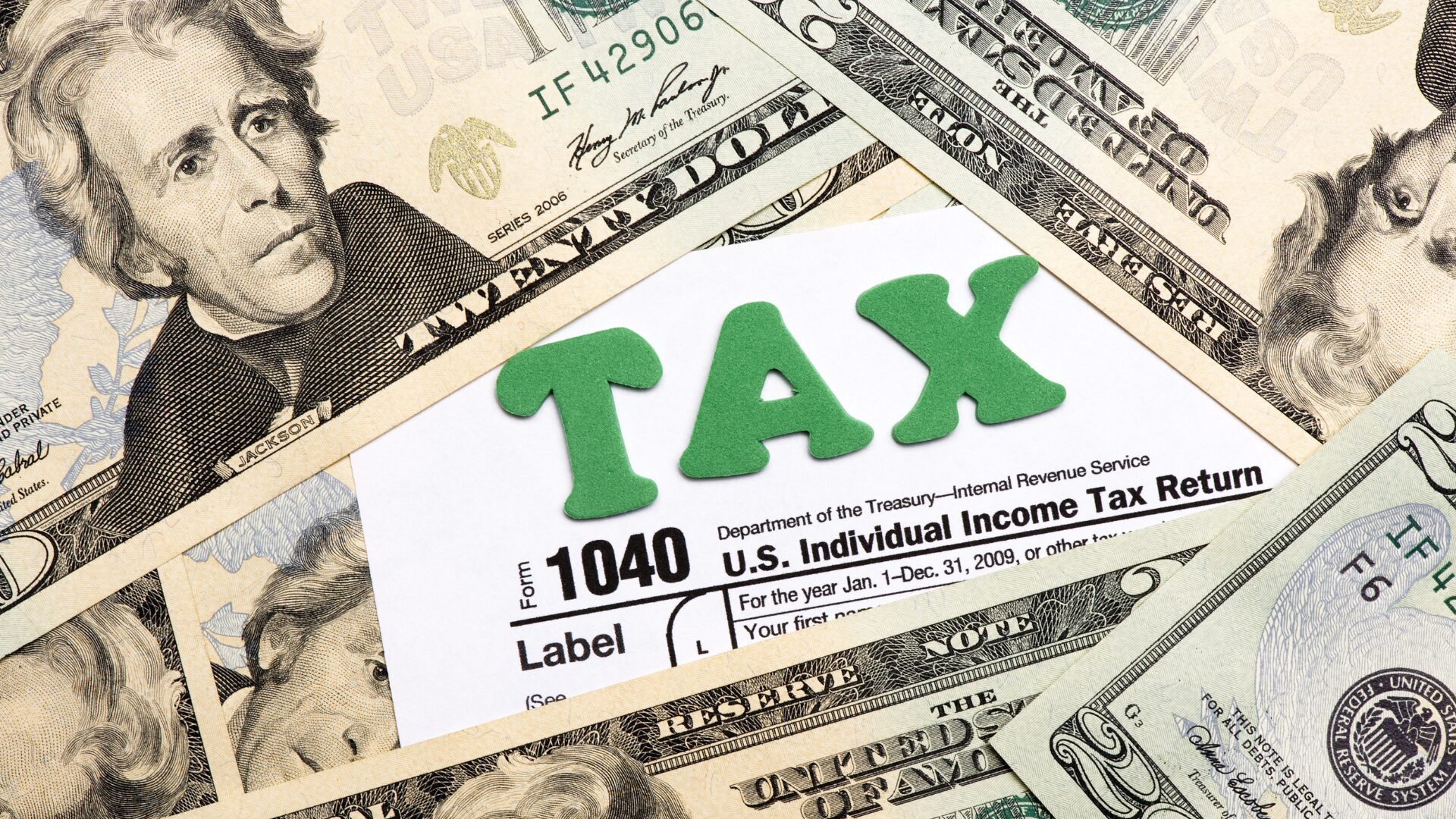Understanding tax brackets is essential for maximizing tax savings and making informed financial decisions. By grasping the intricacies of tax brackets, you can better plan and optimize your financial situation to minimize your tax burden. Let’s dive in and explore the world of tax brackets, the tax bracket definition, the progressive tax system, and strategies to lower your taxable income.
Key Takeaways
Tax brackets are an integral part of the progressive tax system, with rates ranging from 10% to 37%.
Marginal tax rates refer to the rate of taxation applied on each additional income level. The effective tax rate is a ratio between total taxes owed and taxable income.
Tax credits and deductions can be used to reduce overall liability by lowering one’s bracket. Tools such as TurboTax’s calculator are available for accurate calculation.
Defining Tax Brackets: The Basics

Tax brackets are the cornerstone of the United States’ progressive tax system, which structures individual taxpayers’ income tax based on income tax brackets. This system ensures that taxpayers pay a rate that increases with their income, with different tax rates applied to specific income ranges.
We’ll now examine the concept of tax brackets and the progressive tax system in more detail.
What is a tax bracket?
A tax bracket is a range of incomes subject to a specific income tax rate, with the United States having seven federal income tax brackets. Notably, the income tax bracket rate only applies to the income falling within that bracket, not the entire income. For example, let’s say you have a taxable income of $50,000. If you fall into the 22% tax bracket, only a portion of your income will be taxed at 22%, while the remaining portion will be taxed at lower rates. As your income increases, you may be in a higher tax bracket, but remember that the higher rate will only apply to the income within that specific bracket.
In 2023, income tax brackets range from 10% to 37%, with each bracket corresponding to a specific range of income levels. Understanding which tax bracket you fall into can help you better plan your finances and make informed decisions about deductions, credits, and other tax-saving strategies.
Progressive Tax System
A progressive tax system is designed to charge higher tax rates as an individual’s taxable income increases. This system is based on the principle of “ability to pay,” which posits that those with higher incomes should bear a greater tax burden than those with lower incomes. As income levels rise, taxpayers are moved into higher income tax brackets with corresponding higher tax rates.
The progressive tax system divides each taxpayer’s income into segments, each taxed at a specific rate – these segments are what we refer to as income tax brackets. As an individual’s income increases, they will be charged higher tax rates on their additional income. This setup ensures that lower-income taxpayers are not unduly burdened, while those with higher incomes contribute a larger share of their income to the tax system.
2023 Federal Income Tax Brackets

The 2023 federal income tax brackets range from 10% to 37%, with tax rates corresponding to specific income levels and filing statuses. We will now examine the 2023 federal income tax brackets for different filing statuses:
Single filers
Married filing jointly
Married filing separately
Head of household
Single Filers
For single filers in 2023, the income tax brackets and rates range from 10% to 37%. These tax brackets are designed to ensure that lower-income individuals pay a smaller proportion of their income in taxes than those with higher incomes. As a single filer, knowing your tax bracket is key to accurately estimating your tax liability and making informed financial decisions.
Your filing status significantly affects your standard deduction and income tax brackets. For example, a single filer with a taxable income of $45,000 would fall into the 22% tax bracket, but only a portion of their income would be taxed at 22%, while the remaining portion would be taxed at lower rates. Knowing your tax bracket can help you plan for deductions, credits, and other tax-saving strategies.
Married Filing Jointly
Married filing jointly is a tax filing status for married couples who file a joint tax return, allowing them to combine their incomes and deductions and potentially reduce their overall tax liability. In 2023, married filing jointly tax rates increase about taxable income, with tax brackets ranging from:
10% for taxable income up to $22,000
12% for taxable income between $22,001 and $89,000
22% for taxable income between $89,001 and $170,000
24% for taxable income between $170,001 and $329,000
32% for taxable income between $329,001 and $647,850
37% for taxable income over $647,850
Knowing your combined taxable income and the corresponding tax brackets is important when filing jointly. This information can help you make informed decisions about deductions, credits, and other tax-saving strategies to minimize tax liability.
Married Filing Separately
Married filing separately is a filing status for married couples who choose to file separate tax returns, which can benefit couples with different incomes or who wish to take advantage of certain tax deductions or credits. In 2023, the income tax brackets and federal income tax rates for married filing separately range from 10% to 37%.
For example, if one spouse has a significantly higher income than the other, filing separately may allow the lower-earning spouse to qualify for tax deductions or credits that might not be available if filing jointly. Knowing your individual taxable income and the corresponding tax brackets is important when considering the married filing separate status.
Head of Household
The head of household filing status is available to taxpayers who are unmarried and provides financial support for at least one other person, such as a child or dependent relative. In 2023, the tax brackets and rates for head of household are as follows:
10%
12%
22%
24%
32%
35%
37%
This filing status offers several benefits, including a higher standard deduction and lower tax rates than the single filing status. Understanding your taxable income and the corresponding tax brackets as head of household can help you make informed decisions about deductions, credits, and other tax-saving strategies to minimize your tax liability.
Understanding Marginal Tax Rates

Marginal tax rates significantly impact your tax liability within the progressive tax system. These rates are applied incrementally to each dollar earned, with the highest income tax bracket only applicable to the final portion of income.
We’ll examine how marginal tax rates function within the progressive tax system.
How Marginal Tax Rates Work
In the progressive tax system:
Marginal tax rates are applied to each additional level of income
As your income increases, you pay higher tax rates on the additional income
For example, if you are a single filer with a taxable income of $45,000, most of your income would fall within the 12% tax bracket, but the last few hundred dollars would be in the 22% tax bracket, making your marginal tax rate 22%
Grasping your marginal tax rate is fundamental to making tax-efficient financial decisions. It helps you determine the tax implications of additional income, such as bonuses or part-time work and can influence your decisions about deductions and credits to minimize your tax liability.
Effective Tax Rate: Definition and Calculation

The effective tax rate is the actual percentage of your taxable income that you pay in taxes, and it is generally lower than your highest marginal income tax rate. To calculate your effective tax rate, you can divide your total tax owed by your taxable income. Understanding your effective tax rate can provide valuable insight into your overall tax liability and help you make more informed decisions about tax-saving strategies.
For example, if your total tax owed is $6,000 and your total taxable income is $50,000, your effective tax rate would be 12% ($6,000 / $50,000 = 0.12). This effective tax rate considers your income tax brackets and corresponding tax rates, providing a more accurate representation of your tax liability compared to your marginal tax rate alone.
Lowering Your Tax Bracket: Strategies and Tips

There are various strategies and tips for lowering your tax bracket and reducing your tax liability. These approaches include utilizing tax credits and deductions, which can help decrease your taxable income and potentially move you into a lower tax bracket.
We’ll now discuss these strategies and their impact on your tax situation.
Tax Credits
Tax credits can reduce your tax amount, dollar-for-dollar. However, they will not change your tax bracket. Various tax credits are available to eligible taxpayers, including:
Credits for solar panel installation
Adoption expenses
Education
Child care
Dependent care
These credits can help reduce your tax liability but do not directly impact your income tax brackets.
You can potentially lower your overall tax bill and increase your tax savings by utilizing available tax credits. Grasping these credits’ eligibility requirements and application processes is key to fully benefiting from their potential tax-saving power.
Tax Deductions
Tax deductions can lower your taxable income and potentially move you into a lower tax bracket. Deductions reduce your taxable income, leading to a lower income tax bracket and a reduced tax liability. Examples of tax deductions include mortgage interest, student loan interest, and medical expenses exceeding 7.5% of your adjusted gross income.
By itemizing your deductions or using the standard deduction, you may be able to lower your taxable income and reduce your tax bracket. Knowing these deductions’ eligibility requirements and limitations is key to maximizing their tax-saving potential.
Types of Income and Their Tax Rates

Different types of income are subject to varying tax rates, which can impact your overall tax liability. We’ll now discuss ordinary income, capital gains, dividends, and corresponding tax rates.
Ordinary Income
Ordinary income includes:
Salaries
Tips
Bonuses
Commissions
Rents
Other forms of income derived from regular activities
This type of income is subject to federal income tax rates, which range from 10% to 37%, depending on your income level and tax bracket.
Grasping the tax rates that apply to your ordinary income is key, as it can impact your financial decisions and tax-saving strategies. By understanding the tax rates for your ordinary income, you can better plan for deductions, credits, and other tax-saving strategies to minimize your tax liability.
Capital Gains and Dividends
Capital gains refer to the profits derived from the sale of an investment, such as stocks, bonds, or real estate, while dividends are payments made by companies to their shareholders from their profits. Capital gains and dividends are taxed differently than ordinary income, with rates depending on the holding period and income level.
For example, long-term capital gains are subject to more favorable tax rates than short-term capital gains, which are taxed at ordinary income tax rates. Understanding the tax rates for capital gains and dividends can help you make informed investment decisions and optimize your tax-saving strategies.
State Tax Brackets: Differences and Examples

State tax brackets may differ significantly from federal tax brackets, depending on the state in which you reside. Some states have no income tax, while others use a flat tax rate or multiple tax brackets with varying marginal rates. Understanding the differences between state and federal tax brackets can help you better plan for your overall tax liability.
For example, Colorado imposes a flat income tax rate of 4.4% on all taxable income, while California has a maximum marginal tax rate of 12.3%. Several states do not impose an income tax. These include Alaska, Florida, Nevada, South Dakota, Tennessee, Texas, Washington and Wyoming. Knowing your state’s tax brackets and rates can help you better estimate your tax liability and make more informed financial decisions.
Historical Overview of Federal Tax Brackets
The history of federal tax brackets dates back to the Revenue Act of 1861, which introduced the first income tax law to finance the Union government’s conflict with the Confederacy. Over the years, the number of tax brackets and rates has fluctuated significantly, with changes driven by various economic and political factors.
For example, the Tax Reform Act of 1986 simplified the tax brackets and reduced rates, resulting in only two brackets: 15% and 28%. Today, the federal tax system consists of seven tax brackets. Rates range from 10% to 37%. Understanding the historical context of federal tax brackets can provide valuable insights into the evolution of tax policy and its impact on taxpayers.
Calculating Your Tax Bracket: Tools and Resources
Various tools and resources are available for calculating your tax bracket, including online calculators such as TurboTax’s Tax Bracket Calculator and the Internal Revenue Service (IRS) website resources. These tools can help you determine your tax bracket, effective tax rate, and overall tax liability based on your income and filing status.
Using these tools and resources can enhance your understanding of your tax situation, thus making more informed financial decisions. Knowing your tax bracket can help you optimize your tax liability and maximize your savings, whether you’re planning for deductions, credits, or other tax-saving strategies.
Summary
In conclusion, understanding tax brackets and the progressive tax system is crucial for making informed financial decisions and optimizing tax savings. By grasping the intricacies of tax brackets (marginal and effective tax rates), you can better plan your finances and minimize your tax liability. With the right tools, resources, and strategies, you can navigate the complex world of taxation and make the most of your hard-earned income.
Frequently Asked Questions
What is meant by tax bracket?
Tax brackets are the income ranges taxed at different rates in a progressive tax system. They are adjusted each year to account for inflation, meaning higher-income earners pay a higher rate than lower-income earners. Tax brackets determine how much of an individual’s taxable income is subject to a specific tax rate.
What determines tax brackets?
Your tax bracket is determined by your filing status and taxable income, with different brackets having different tax rates ranging from 10% to 37%.
What does it mean to be in a higher tax bracket?
Being in a higher tax bracket means you are taxed at a higher rate for the portion of your income that falls within that bracket, although your overall rate will remain the same. This means that you can still take home more money in each paycheck.
What does 22% tax bracket mean?
A 22% tax bracket means that a single filer with income between $41,776 and $89,075 will be subject to a 22% federal income tax rate for 2022.
How does a progressive tax system work?
A progressive tax system applies higher tax rates to individuals with higher incomes, with different rates applied to various income ranges. This ensures that those who earn more are taxed more than those who earn less.





